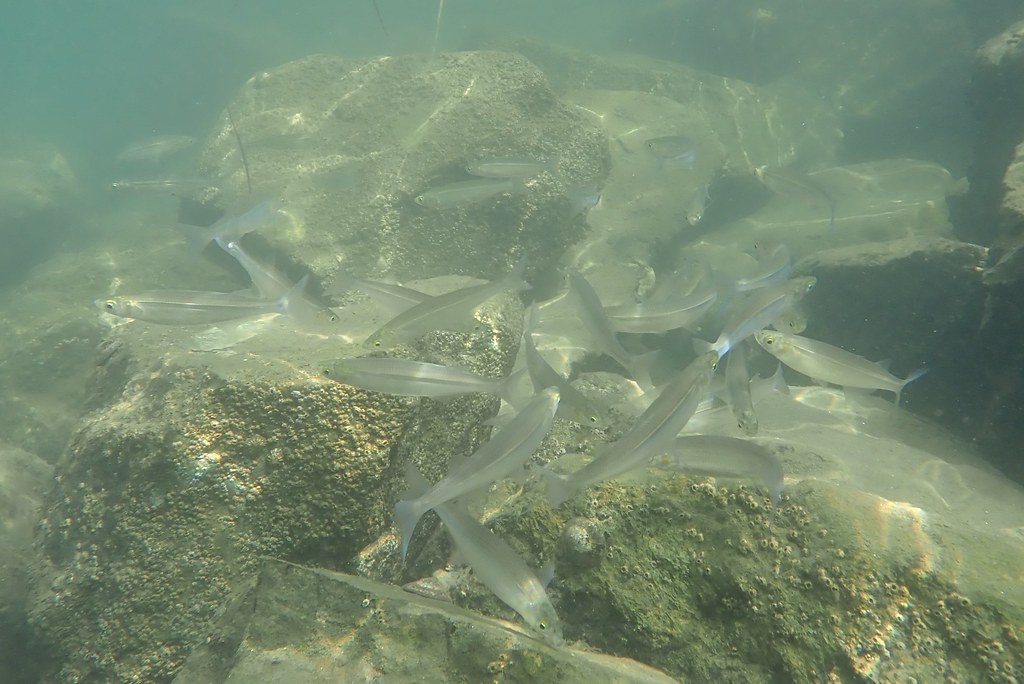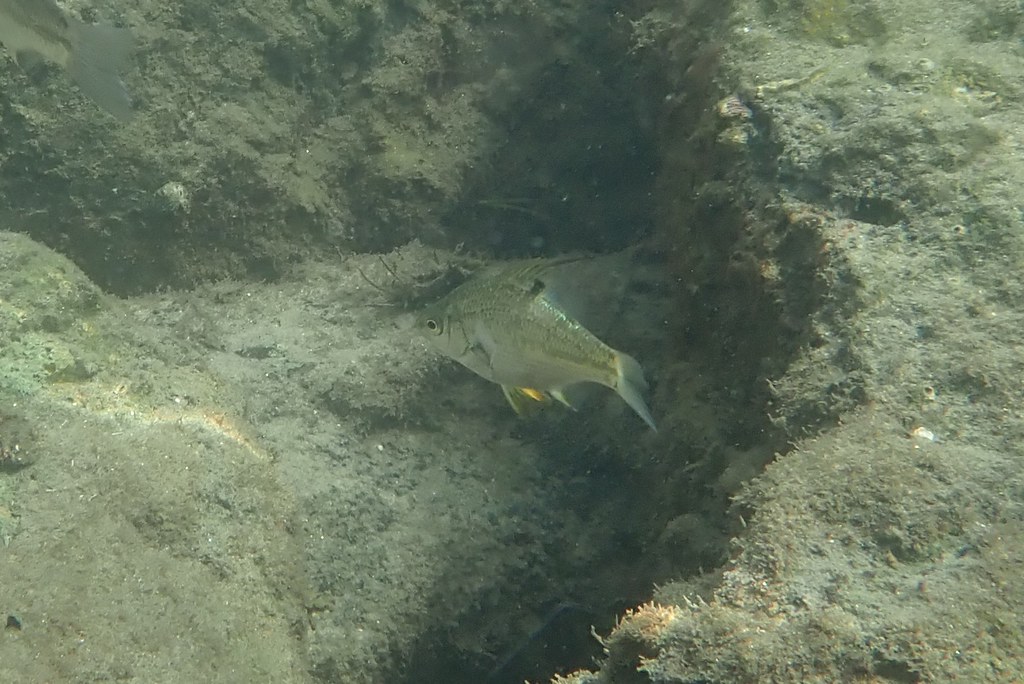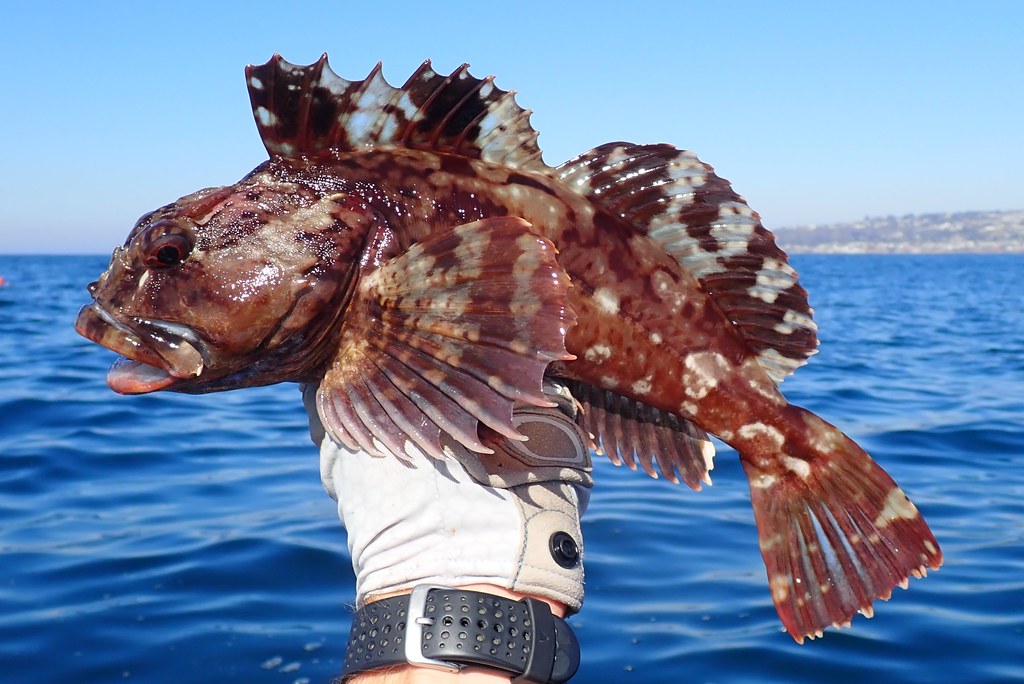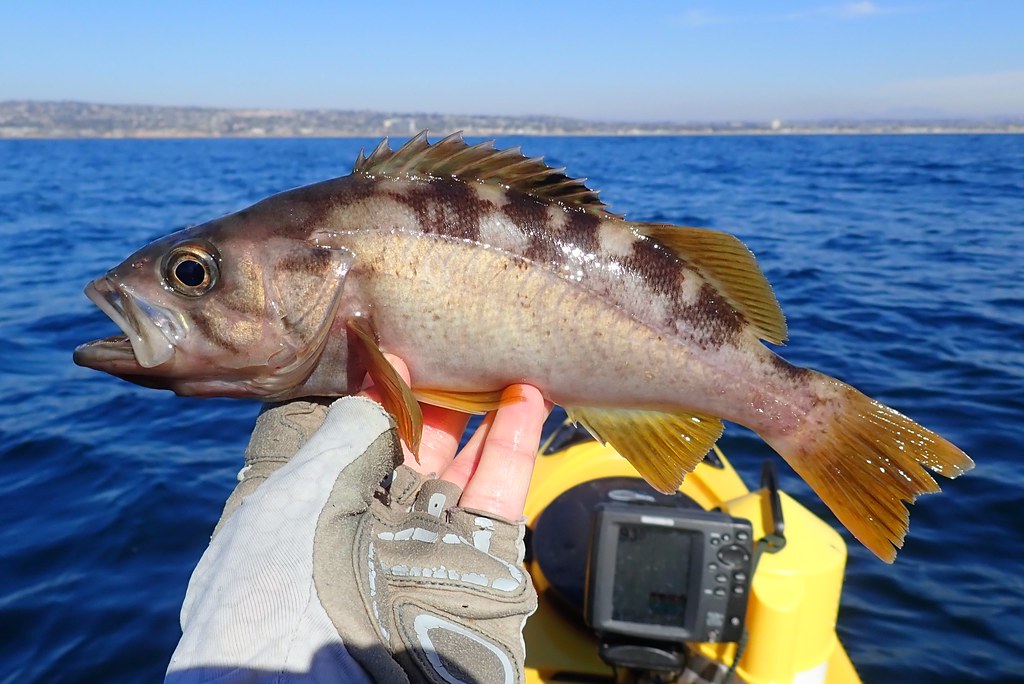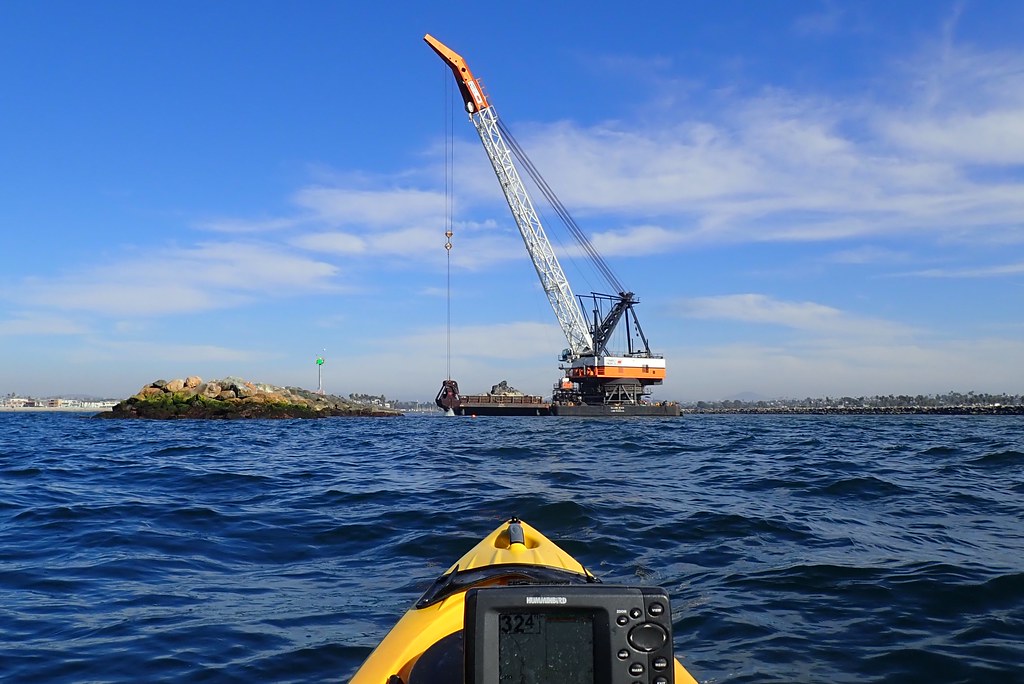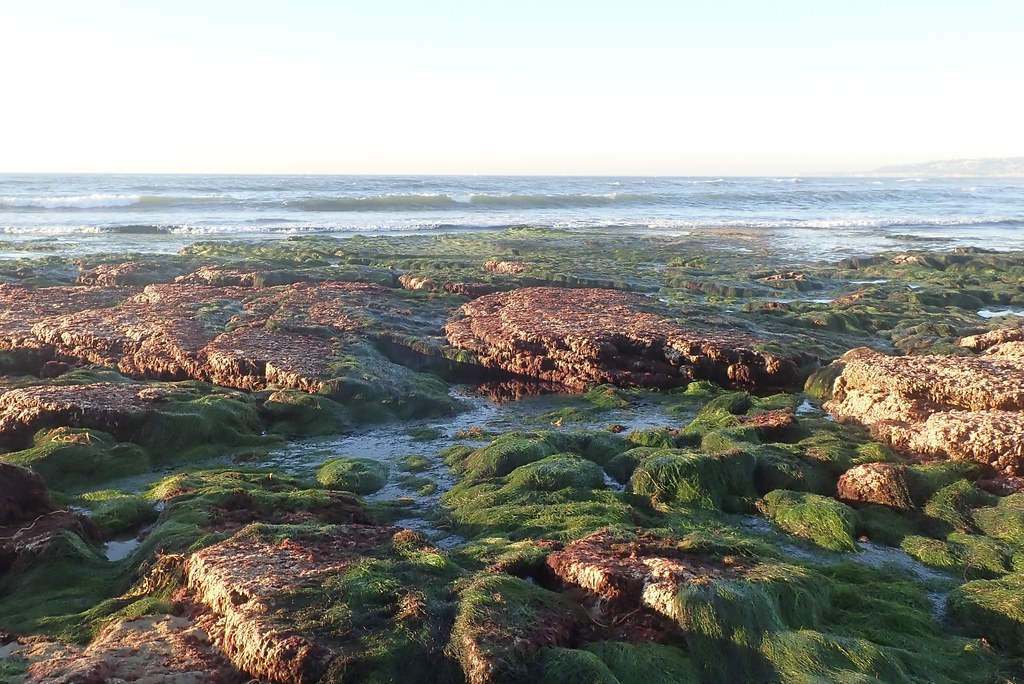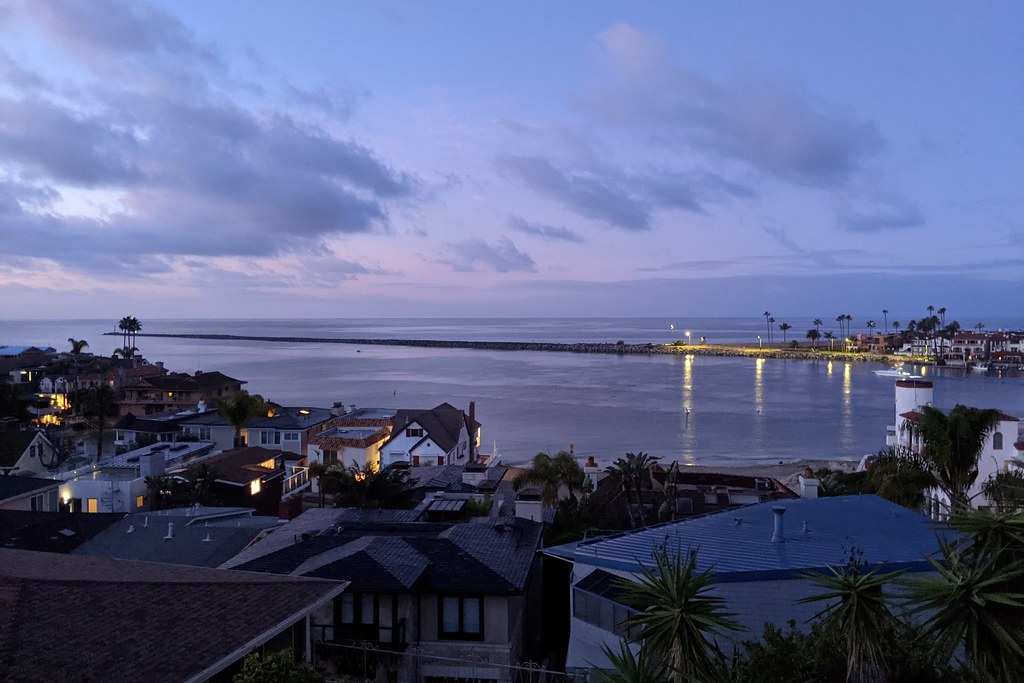
I unloaded in the dark and met Mike, who was taking his new bright green Stealth Fusion 480 out for the first time. He got on the water to meet his friend Quang, and then Fernando and Anthony arrived and started unloading when I was launching. The group assembled out past the jetty where we caught mackerel for bait.

It was a breezy morning. I wanted to fish around 400 feet deep for hake, and I thought the wind would die down as the sun came out. Anthony agreed to paddle the 2.7 miles to the furthest pin I had marked to the north. The paddle wasn't too bad, but by the time we arrived the wind was really picking up. I was able to get my 8 oz jig to the bottom, but drifting at around 1.5 mph meant we couldn't stay on top of structure. I tipped the jig and the circle hook above it with pieces of mackerel and caught a variety of small bottom species. Birds and dolphins were feeding on bait fish in the distance, but they were always too far away to be worth paddling to.
Calico Rockfish (Sebastes dallii)

California Scorpionfish (Scorpaena guttata)

Longfin Sanddab (Citharichthys xanthostigma)
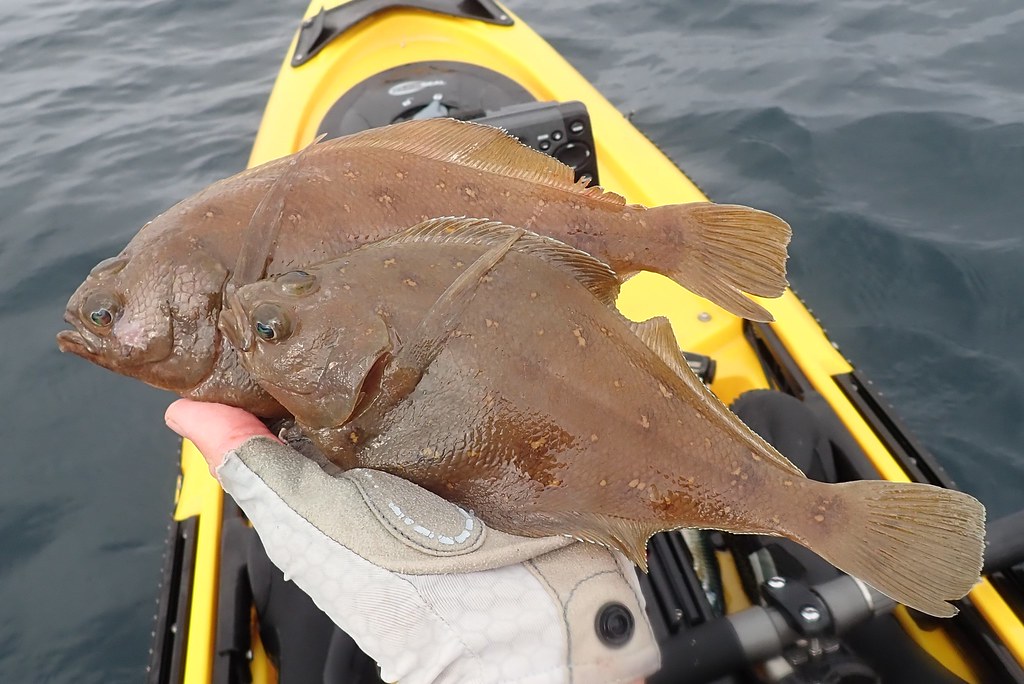
The wind kept getting stronger, and the sky was getting darker to the west, so we decided to do the prudent thing and start paddling back to the jetty. I felt bad that I had talked Anthony into going on my wild goose chase, but he was a good sport about it. We gritted our teeth and paddled into the wind. At times we were only able to manage about 1.5 mph.

Once we passed Balboa Pier the wind started to finally lay down a bit. It was still blowing, but conditions looked fishable again. We paddled back out towards deeper water, but this time we kept the jetty within sight. Anthony wanted to fish a shallower spot that had good structure with the other guys, but I stubbornly wanted to try 400 feet a bit more for the hake, so we parted ways. I dropped some smaller hooks and quickly felt a few small nibbles. I pulled up two rockfish, one of which was definitely a halfbanded, but the other one looked like something new!
Stripetail Rockfish (Sebastes saxicola) - new hook & line species #702

It takes quite a bit to make me seasick, but the swell and chop were starting to get to me. Every time I looked down to deal with gear my stomach sent signals that it might do something unpleasant. I did what every fisherman does when it's time to head in, which is to declare one more cast (or drop in this case). I sent my rig to the bottom, felt small taps again, and this time when I reeled up I saw two slender silvery fish that could only be one thing. Hake!
North Pacific Hake (Merluccius productus) - new hook & line species #703

One of my goals for the year was to catch a new non-rockfish, non-sanddab species from the deep. I envisioned it happening at 1000+ feet, but I think a pair of hake from 400 feet certainly should qualify. Thanks goes to Mike for posting a hake a while back that inspired me to try for them!

One of my goals for the year was to catch a new non-rockfish, non-sanddab species from the deep. I envisioned it happening at 1000+ feet, but I think a pair of hake from 400 feet certainly should qualify. Thanks goes to Mike for posting a hake a while back that inspired me to try for them!

Back at the launch Mike and Anthony were loading up their vehicles. Everyone was pretty beat from battling the wind all morning, but we were happy to get to spend the day on the water. Mike was happy with his Stealth. His only complaint was that it was a "wet ride" with water coming through the scuppers at his feet and in the seat.

Below is the screenshot from my Garmin watch. You can see by the lack of squiggles that we only stopped to fish a few spots. Most of the day was paddling and fighting the wind.

























